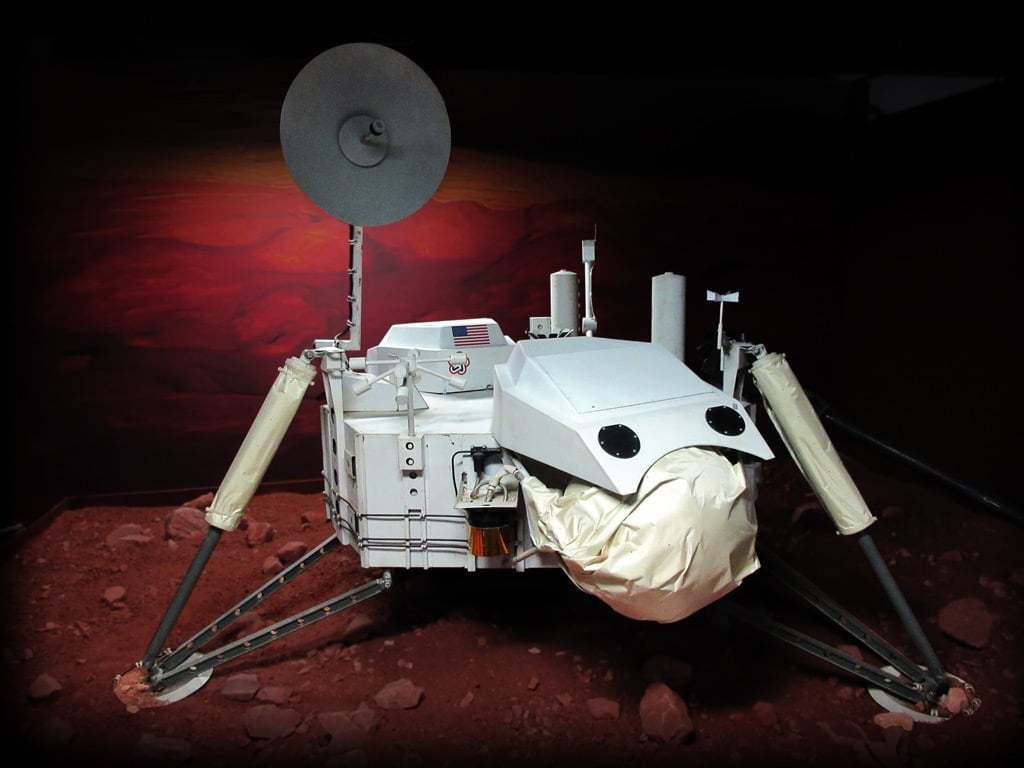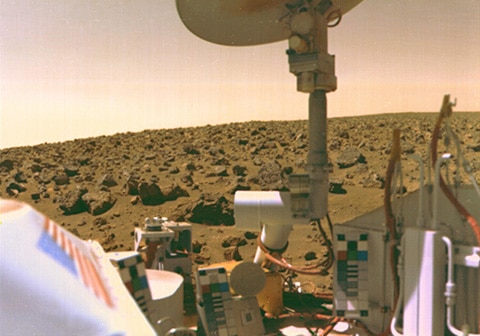Mars Viking Lander
Mars Viking Lander
Mass: 576 kg (1,270 lbs) Launch Vehicle: Titan III-E / Centaur Launched from: Launch Complex 41, Cape Canaveral AFS Program: NASA Descent Engines: Hydrazine monopropellant Location on Mars: Viking 1- 22°41’49″N…
Event Access:

Mass: 576 kg (1,270 lbs)
Launch Vehicle: Titan III-E / Centaur
Launched from: Launch Complex 41, Cape Canaveral AFS
Program: NASA
Descent Engines: Hydrazine monopropellant
Location on Mars:
Viking 1- 22°41'49"N 48°13'19"W
Viking 2- 48°16'08"N 225°59'24"W
Manufacturer: Lockheed Martin
Model Scale: Actual size
In August and September of 1975, the Viking program dispatched two orbiters and two landers to Mars - the most ambitious and expensive mission ever sent to Mars at more than $1 billion in then-year dollars. The objectives of the mission were to obtain high resolution images of Mars, characterize the atmosphere and surface of Mars and search for evidence of life. The biological experiments performed by the landers delivered intriguing, but, at the time, inconclusive evidence of organic molecules in the soil; later work by the Phoenix lander showed perchlorates in the Martian soil, which would interact with organics to produce chloromethane and dichloromethane - both discovered by the Viking landers. It was the imagery produced by the Viking program that revolutionized our thinking about the presence of water on Mars.
The Viking Lander mockup is a gift from Lockheed Martin.
Space Foundation Discovery Center staff and docents present, an artifact lesson series on space exploration history with our very own collection pieces. This session will focus on the Viking Lander.

